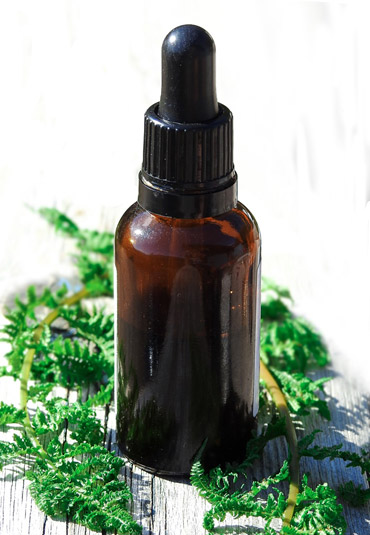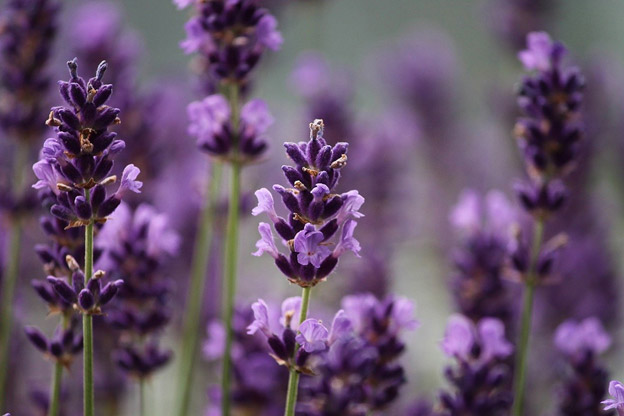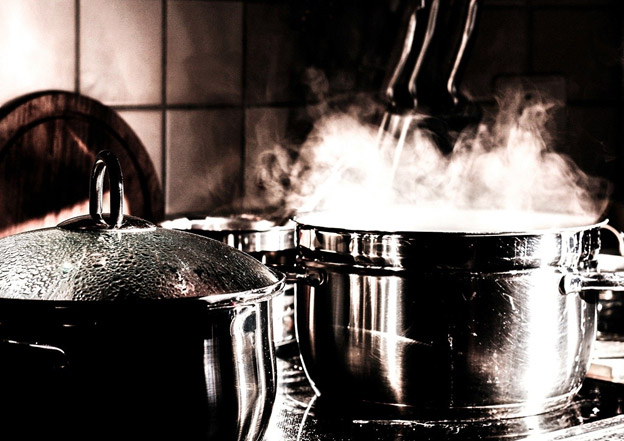Making essential oil at home is not that difficult. You can make it from your own plants in your yard and take advantage of all the therapeutic benefits. It’s a great way to take care of yourself and your family with natural remedies.
Many of the culinary herbs we use in our cooking can be used in essential oil. Peppermint, basil, cinnamon, and more are ones that people have used in essential. If you’re interested in making essential oil at home, it’s time to learn about steam distillation.
Steam Distillation for DIY Essential Oil
This is the most common way to make essential oil. You do not need expensive essential oil stills or fancy essential oil equipment. The steam distillation method involves boiling the herbs and plants and then separate the plants from the water. The oil rises to the surface and that is what you want to bottle. The only downside is that you may need to use more than you normally do because this essential oil may not be as potent as the one you buy from a manufacturer.

How to Make Essential Oil with Expression
The expression method involves squeezing the plant, flower, or fruit. This is what most people do when they want essential oil from an orange. All you have to do is press the orange with a commercial press and that will remove the oil. You will need to remove any solid parts. For essential supplies, you just need a really good press and filtering system.
Solvent Expression
When making essential oil at home, you probably don’t want to use this method. It uses chemicals to make the oil. Since some of the solvents can cause injury or death, it’s best to stick with the expression and steam distillation methods.
How to Make Plant Based Essential Oils at Home with Your Own Plants

It’s important that plants you’re using for essential oil are not fertilized with chemicals. Those chemicals will end up in your essential oil. You also don’t want your plants near the road or power lines, so they don’t end up growing with pollutants inside of them that will end up in your oil.
It’s important to harvest the plants at the right time. Usually, you want flowers when they are half-open. There are some plants you want to wait on, though. Lavender should be picked when the flowers are open and stems are wilted. Rosemary should be harvested when it is already opened and ready to wilt. Harvesting the plants at the right time will ensure you receive the potency you’re looking for in your DIY essential oil.
When you harvest the plants, you’ll need to let them dry out. You can do this by leaving them out in the air away from direct sunlight for a few days. You will know when they are ready when they crumble in your hands. Make sure where you store your plants isn’t too hot. While you may think the warmth of the space will be good for drying, it actually will make it harder for you to extract and it can damage the plant leading to reduced essential oil potency.
Keep in mind you need a lot of plant material for your essential oil. Hundreds of pounds of plant material can end up only giving you an ounce or two of oil. This is why essential oils can be expensive, but that doesn’t mean you shouldn’t make it at home. If you have a thriving garden of essential oil plants, it’s easy to make DIY essential oil.
Essential Oil Stills Aren’t Required for DIY Essential Oil
You do not need essential oil stills to make your own essential oil. You can DIY essential oil with a crockpot or on the stovetop. All you need to do is place dried plant material into the crockpot and fill it with water. Cook on low for 24 to 36 hours and then shut it off. Allow it to cool and then put cheesecloth on top of it and let it sit for a week away from direct sunlight. After a week, you simply collect the oil that has risen to the top. Be sure to transfer the oil to a colored glass container to preserve the potency of the oil. It should last 12 months if kept in a cool, dry location.

The stovetop method involves placing the plant material in a mesh bag and then putting the bag in the pot. Simmer the plant material for 24 hours. Water will evaporate, so add more water when needed. After the 24 hours, strain or remove the oil that has risen to the top of the water. Place the oil in a colored container, and store in a cool, dry place.
The above method may not produce an essential oil that is as potent as you would like. If you’re really interested in making essential oil at home, you should consider saving up for essential oil equipment, such as a still. It will save you money over time from buying essential oils from manufacturers.
